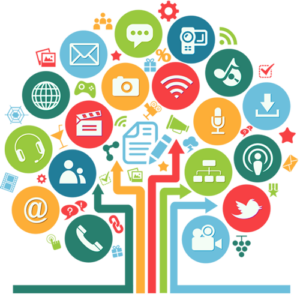At the heart of the smart municipality and smart village is a smart administration that has digital and electronic means and tools, which has developed a high level of communication with its citizens and allows them not only to perform services within their scope from the comfort of their own home, but also to efficiently, timely and transparently inform about their own work, news, projects and events from their own and other important areas.
Smart rural areas or villages are rural areas or rural communities that use innovative solutions to strengthen their sustainability, using their own strengths and their own development opportunities.
Such a smart administration fully knows, and in an appropriate and efficient way uses all the possibilities of modern digital tools to establish the most effective two-way communication in its activities and strategic integration of citizens into the development of a smart municipality and a smart village.
Smart municipality employees are employees who are trained to use all modern digital capabilities of a smart municipality and do not hesitate to get acquainted with the technological innovations of tomorrow and use them for the benefit of all participants in digitalization and modernization of communications smart administration, smart municipalities, and smart villages.
Furthermore, a key element of the sustainability of smart municipalities and smart villages is precisely this fearlessness towards the new and unknown, continuous improvement, learning and raising the level of awareness and knowledge about the new, digital future, without rejecting progress with the arguments of a possible newly completed project.
However, for the concept of a smart municipality and smart villages to make sense, we must see it as an action that is more than just a way of communication between such an administration, i.e. employees and administrative processes, and its citizens.
Moreover, for such a term to retain the epithet of smart, at the same time sustainable, which must be its goal, we must view it as a process that does not live exclusively in the present but thinks and lives in the future as well. He systematically reflects on social and technological innovations that become part of his life and work, encourages innovative and technologically advanced modern economy, industry, and life of his citizens, actively involves them in the planning of the development of municipalities and villages, has an innovative and interactive approach to social life, digitally literates and ennobles them, is the initiator and insurer of a modern, attractive, and sustainable environment.

Such a concept responsibly uses and manages all its resources using all available economic, social, and technological innovations, and as such is not only a desirable and essential factor for existing citizens, but is an attractive, desirable, and decisive factor for future citizens and residents of such a smart municipality and smart villages.
Finally, the main and most important advantages of smart rural areas, because of digitalisation and modernisation, are:
- Replacing traditional networks and services with modern, digital
- Better quality of life and higher standard of living
- Better use of available resources (especially local ones)
- New opportunities for the environment and work environment
- Investments in infrastructure
- Business development and modernization
- Better governance and sustainability
- Strengthening human potential and building additional capacity of the community.
These benefits can be summarized in the goal, which must be to improve the economic, social, environmental, educational and health conditions of life and work.
Finally, a smart municipality, i.e. a smart village and a smart rural area can identify and quantify its success in several levels of maturity:
- Integrated Information and Communication (ICT) infrastructure,
- Effective management of the Municipality and rural areas,
- Efficient use and management of data,
- Involvement of residents in management and decision-making processes.
